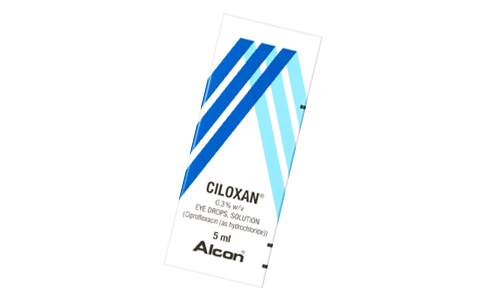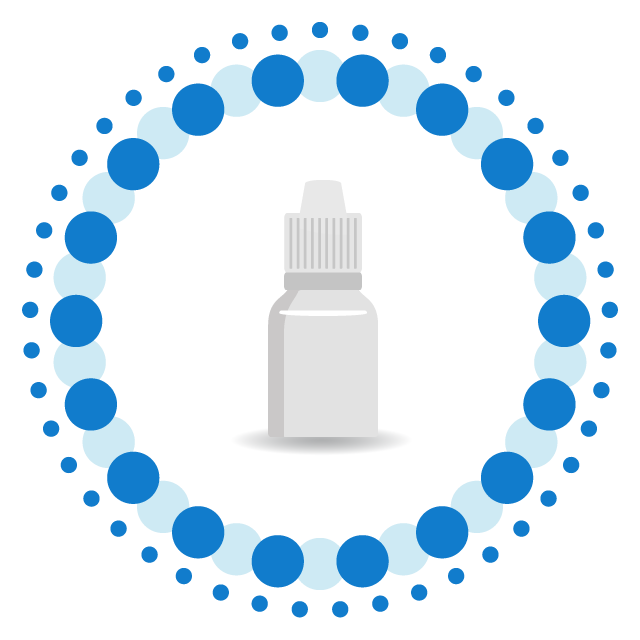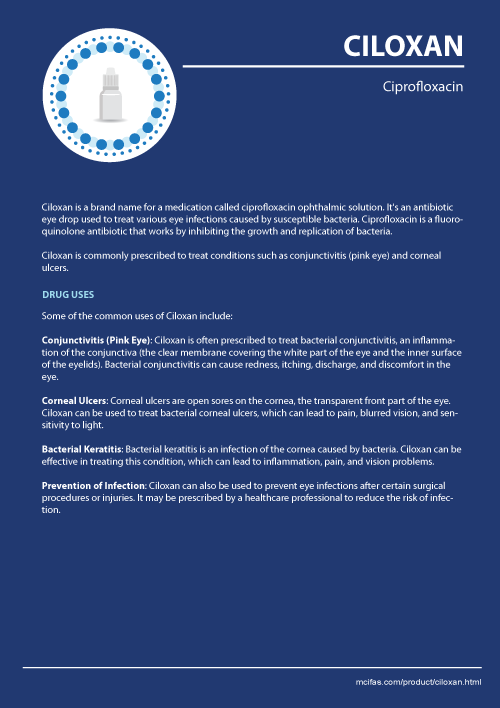Ciloxan Prescribing Information
Ciloxan is a brand name for a medication called ciprofloxacin ophthalmic solution. It's an antibiotic eye drop used to treat various eye infections caused by susceptible bacteria. Ciprofloxacin is a fluoroquinolone antibiotic that works by inhibiting the growth and replication of bacteria.
Ciprofloxacin is commonly prescribed to treat conditions such as conjunctivitis (pink eye) and corneal ulcers.

Uses of Ciloxan
Some of the common uses of Ciloxan include:
- Conjunctivitis (Pink Eye): Ciloxan is often prescribed to treat bacterial conjunctivitis, an inflammation of the conjunctiva (the clear membrane covering the white part of the eye and the inner surface of the eyelids). Bacterial conjunctivitis can cause redness, itching, discharge, and discomfort in the eye.
- Corneal Ulcers: Corneal ulcers are open sores on the cornea, the transparent front part of the eye. Ciloxan can be used to treat bacterial corneal ulcers, which can lead to pain, blurred vision, and sensitivity to light.
- Bacterial Keratitis: Bacterial keratitis is an infection of the cornea caused by bacteria. Ciloxan can be effective in treating this condition, which can lead to inflammation, pain, and vision problems.
- Prevention of Infection: Ciloxan can also be used to prevent eye infections after certain surgical procedures or injuries. It may be prescribed by a healthcare professional to reduce the risk of infection.
Dosage
The dosage of Ciloxan can vary depending on the specific eye infection being treated and the severity of the condition. Below are general guidelines for the typical dosages of Ciprofloxacin:
Conjunctivitis (Pink Eye):
- For adults and children: Instill 1 to 2 drops into the affected eye(s) every 2 to 4 hours, while awake, for up to 2 days, followed by 1 to 2 drops every 4 hours, while awake, for the next 5 days.
Corneal Ulcers or Bacterial Keratitis:
- For adults and children: Instill 1 to 2 drops into the affected eye(s) every 15 minutes for the first 6 hours, then every 30 minutes for the remainder of the first day. On the second day, use 1 to 2 drops every hour. On the third through fourteenth days, use 1 to 2 drops every 4 hours. After day 14, use 1 to 2 drops every 6 hours until the ulcer heals.
It's important to wash your hands before applying the eye drops and to tilt your head back slightly while pulling down your lower eyelid to create a small pocket. Gently squeeze the prescribed number of drops into the pocket without touching the tip of the dropper to your eye. Close your eye gently for a moment to spread the medication.
Side Effects of Ciloxan
Ciloxan can cause side effects, although not everyone will experience them. Common side effects are usually mild and might include:
- Burning or Stinging Sensation: You might feel a brief burning or stinging sensation in the eye after applying the drops. This is usually temporary and should subside.
- Redness or Irritation: Your eyes might become slightly red or irritated after using Ciloxan, especially during the first few days of treatment.
- Watery Eyes: Some people might experience increased tear production or watery eyes as a result of using the eye drops.
- Blurred Vision: Your vision might become temporarily blurred immediately after applying the drops. This should clear up quickly.
- Foreign Body Sensation: You might feel as if there's something in your eye, even though there isn't. This sensation should go away on its own.
- Dry Eyes: In some cases, Ciloxan can lead to temporary dryness in the eyes.
Serious side effects are rare, but they can occur. If you experience any of the following, you should seek medical attention immediately:
- Severe Eye Pain or Discomfort: If you experience severe pain, discomfort, or worsening of symptoms after using Ciloxan, it could be a sign of a serious reaction or complication.
- Allergic Reactions: Allergic reactions to medications are rare, but they can occur. If you notice symptoms such as itching, swelling, rash, or difficulty breathing, seek medical help immediately.
- Increased Irritation: If your eyes become increasingly red, swollen, or irritated after using Ciloxan, it's important to consult a healthcare professional.
- Changes in Vision: If your vision becomes significantly worse or you notice any changes in your vision, contact a doctor.
- Eye Sensitivity to Light: If you experience increased sensitivity to light (photophobia) that is severe or persistent, it could be a cause for concern.
Interaction with other drugs
Ciloxan is primarily used as eye drops, which means its interactions with other drugs are generally limited compared to oral medications that get absorbed into the bloodstream. Here are a few things to consider:
- Other Eye Medications: If you're using other eye drops or ointments, it's important to space out the administration of different eye medications. Wait at least 5 to 15 minutes between applying different eye products to ensure proper absorption and effectiveness.
- Oral Medications: Since the systemic absorption of ciprofloxacin from ophthalmic eye drops is minimal, interactions with oral medications are less likely.
- Avoid Contamination: To prevent contamination and potential interactions, avoid touching the tip of the eye drop container to any surface, including your eye, hands, or any other objects. Wash your hands before applying eye drops.
What to avoid while on Ciloxan
While using Ciloxan, there are certain precautions you should take to ensure the medication's effectiveness and to avoid potential complications. Here are some things to avoid while using Ciloxan:
- Contact Lenses: If you wear contact lenses, it's generally recommended to avoid wearing them while using Ciloxan. Contact lenses can absorb the medication and reduce its effectiveness. If your doctor approves, you can usually resume wearing contact lenses after completing the treatment course.
- Other Eye Medications: Be cautious when using other eye medications alongside Ciloxan. If you need to use other eye drops or ointments, it's a good idea to space out their administration by at least 5 to 15 minutes to avoid dilution and potential interactions.
- Contaminating the Eye Drops: To prevent contamination and maintain the sterility of the eye drops, avoid touching the tip of the dropper to any surface, including your eye, hands, or any other objects. This can introduce bacteria and compromise the effectiveness of the medication.
- Driving or Operating Machinery: Medicine can sometimes cause blurred vision immediately after application. If you experience any visual disturbances, it's best to wait until your vision clears before driving or operating machinery.
- Allergic Reactions: If you have a known allergy to ciprofloxacin or any other ingredients in Ciloxan, avoid using the medication.
- Sharing Medication: Do not share your eye drops with others, even if they have similar symptoms. Each person's infection might be caused by a different type of bacteria, and using someone else's medication could be ineffective or harmful.
- Expiry Date: Always check the expiration date on the medication packaging. Do not use Ciloxan if it has expired.
- Smoking: While not directly related to Ciloxan's use, it's worth noting that smoking can contribute to eye irritation and other eye-related issues. If you're using Ciprofloxacin to treat an eye infection, avoiding smoking or exposure to smoke can help your eyes recover more effectively.
Contraindications of Ciloxan
Contraindications are specific situations or conditions in which a medication like Ciloxan should not be used due to potential risks or complications. Here are some contraindications and precautions:
- Hypersensitivity or Allergy: If you have a known hypersensitivity or allergy to ciprofloxacin or any of the components in Ciloxan, you should not use this medication. Allergic reactions can range from mild irritation to severe reactions requiring immediate medical attention.
- Tendon Problems: Ciloxan belongs to a class of antibiotics called fluoroquinolones, which have been associated with an increased risk of tendonitis (inflammation of tendons) and tendon rupture.
- Myasthenia Gravis: Myasthenia gravis is a neuromuscular disorder that can lead to muscle weakness and fatigue. Fluoroquinolone antibiotics like ciprofloxacin can exacerbate symptoms in individuals with myasthenia gravis.
- Children and Adolescents: Ciloxan is generally considered safe for use in children and adolescents for the approved indications.
- Pre-existing Medical Conditions: If you have any pre-existing medical conditions, such as diabetes, certain eye disorders, or a history of allergic reactions, your doctor will consider these factors when determining if Ciloxan is appropriate for you.
Pregnancy and Ciloxan
While Ciloxan is applied directly to the eyes and is not significantly absorbed into the bloodstream, it's still important to consider potential risks and benefits when using any medication during pregnancy.
Here are some key points to consider when it comes to using Ciloxan during pregnancy:
- Limited Absorption: Ciloxan is used as eye drops and is intended to treat eye infections. The systemic absorption of the medication into the bloodstream is minimal, which reduces the risk of exposure to the developing fetus.
- Alternative Treatments: Depending on the severity and type of eye infection, there may be alternative treatment options that could be considered safer during pregnancy.
- Breastfeeding: If you are breastfeeding, you should also discuss the use of Ciloxan with your doctor. While limited systemic absorption is expected, it's still advisable to seek professional guidance.
» Drug Uses (format pdf, 0.2 Mb)



